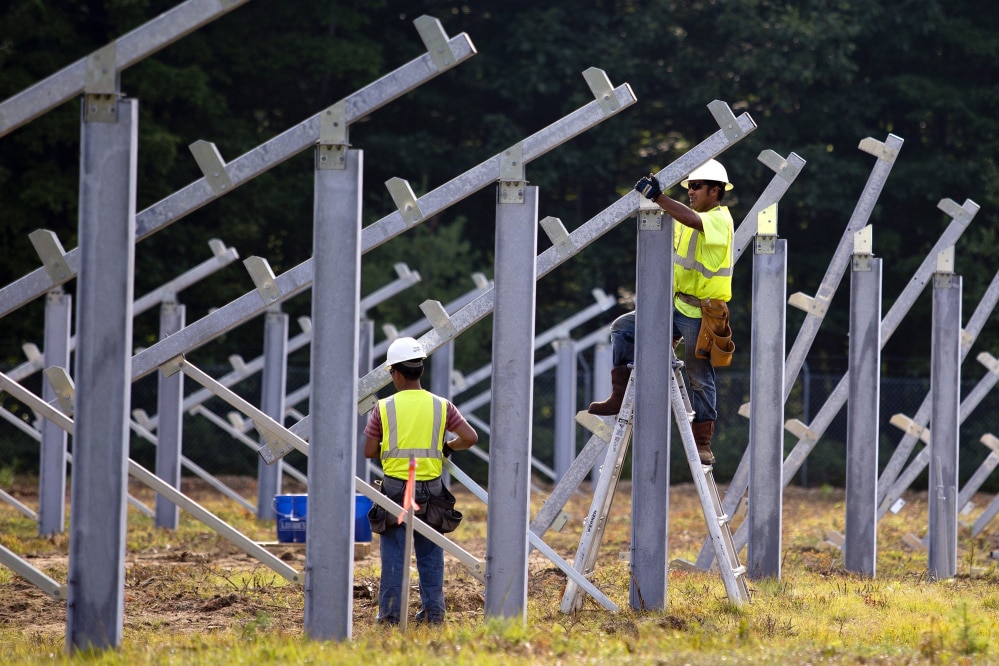The Ohio Power Siting Board approved the applications for three utility-scale solar projects that are expected to bring more than 530 MW of combined capacity to the Buckeye State.
The projects are the 109.9 MW Mark Center Solar project, the 125 MW Wheatsborough Solar project and its accompanying 50 MW battery energy storage system (BESS), and the 300 MW Hardin Solar Energy III project.
The three projects represent a considerable addition to the state’s solar capacity, which currently is just under 800 MW, according to the Solar Energy Industries Association. Ohio has been a boom market for solar in recent months; the majority of Ohio’s solar capacity has come online since the beginning of 2020.

The Mark Center Solar Project will occupy roughly 665 acres within an 877-acre project area in Defiance County, west of Toledo. The project is being developed by Candela Renewables, a developer formed by NextLight Renewable Power and First Solar alums Brian Kunz and Nik Novograd.
Candela anticipates starting construction in August 2022 and completing work in June 2023.
The Wheatsborough Solar project will be located in Erie County, midway between Toledo and Cleveland. The 125 MW project is being developed by Apex Clean Energy and will include roughly 390,000 monocrystalline bifacial PV panels mounted on single-axis trackers and installed in linear arrays. It will also include a 50 MW battery energy storage system (BESS). The BESS will consist of up to 54 battery containers, 54 inverters, and 27 transformers.
The biggest of the bunch, the 300 MW Hardin Solar Energy III project, will be located in Hardin County in south central Ohio. Developed by Invenergy, the project is the third in a group that includes the 150 MW Hardin Solar I project and the 170 MW Hardin Solar II project. Hardin II also includes a 60 MW lithium-ion BESS.
Modules will be mounted on single-axis trackers affixed to piles sunk 10 to 15 feet below grade. Invenergy said the depth of the footing notes is necessary “in areas with freeze thaw or loose soils, such as Hardin County.”
This content is protected by copyright and may not be reused. If you want to cooperate with us and would like to reuse some of our content, please contact: editors@pv-magazine.com.









By submitting this form you agree to pv magazine using your data for the purposes of publishing your comment.
Your personal data will only be disclosed or otherwise transmitted to third parties for the purposes of spam filtering or if this is necessary for technical maintenance of the website. Any other transfer to third parties will not take place unless this is justified on the basis of applicable data protection regulations or if pv magazine is legally obliged to do so.
You may revoke this consent at any time with effect for the future, in which case your personal data will be deleted immediately. Otherwise, your data will be deleted if pv magazine has processed your request or the purpose of data storage is fulfilled.
Further information on data privacy can be found in our Data Protection Policy.